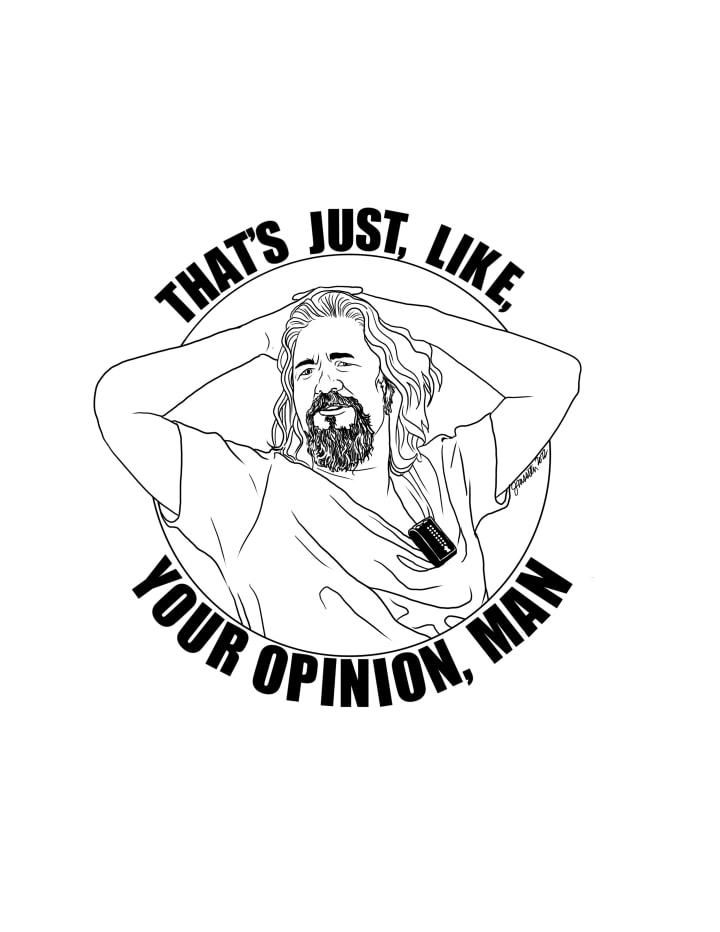Visual Storytelling: Revealing Your Character Without Dialogue
I am not a writing teacher but I am a storyteller and this concept helps me when I struggling.
Open your mind a moment. I want you to picture a man, just an average dude. For the sake of the point that I am hoping to illustrate, this random dude, his name is Steve, is the main character of our story. Steve is a blank slate on which we will impose the story we are telling. We get to determine who Steve is. With every choice we make, every detail that we add, Steve becomes more alive in our story. And when I say detail, I mean everything. From the length of Steve’s hair to his eye color, we control everything.
All of Steve’s various traits are ways in which we can tell a story in which Steve is the main character. This goes for Steve as the protagonist of a short story or Steve as the star of a novel or a film. There are numerous ways to develop Steve from our blank slate to a full grown character. For instance, let’s use Steve’s clothes to tell a story about who Steve is. You don’t have to try and make every detail matter, but often a storyteller can demonstrate clumsiness via visual storytelling by giving a character an implied trait, one unintended by the writer.

This is Steve in a frame: He’s wearing jeans, what does that tell you about him? It could say nothing but it could also indicate that he has a job that is casual enough that jeans are acceptable. He’s wearing a baseball cap. He’s probably not wearing that to work so where is Steve going where a baseball cap is not frowned upon? He’s also wearing a t-shirt with Elon Musk’s face on it. Oh, there it is. That stopped you in your tracks didn’t it. The jeans and the baseball cap are nonspecific but still telling of something that you can build on.
The Elon Musk t-shirt however, is a big detail. When you include the fact that Steve is wearing an Elon Musk t-shirt, you are drafting into your story the cultural, political, general feelings that your reader has about Elon Musk into your story. Let’s say, perhaps, that I find Elon Musk to be a thin-skinned, racist d-bag.I am now in a mindset to project the traits of Elon Musk onto our guy Steve. Suddenly our perception of Steve goes from nondescript dude to d-bag by association with Elon Musk. If you aren’t intending to make Steve out as a d-bag then why did you choose that detail? If you wanted Steve to remain a blank slate, you would not visually associate him with anyone, but especially not with a man whose traits he does not share.

Elon Musk is in a frame in the minds of readers. He’s likely in a frame in your mind. That frame around Elon Musk could be positive or negative. He might mean absolutely nothing to you. But, most of the people consuming your story do have a frame around Elon Musk in their mind and when they see Steve wearing that t-shirt, Steve immediately framed with the same frame as Elon Musk. This could mean Steve is into technology in a big way. Or, it could mean that Steve is a big fan of the kind of apartheid era racism that Elon Musk barely conceals on a daily basis.
The point is that something as seemingly simple as a choice of t-shirt for your character is part of your story whether you mean it to be or not. Now, don’t get paralyzed by this point. I don’t want to encourage you to second guess yourself in your writing. This is just something to be conscious of, it’s not a hard and fast rule that you need to care about the kind of shoes your character wears or who the main character has on their t-shirt. Rather, instead of being fearful or paranoid about these details, think of it like an opportunity to expand your story.

Let’s say that you really want to establish a trait in your character but you don’t want the character to simply say, I’m a charitable person or I’m an activist. You can use these details to underline or highlight these character traits. A good example is that guy in college who wore a Che Guevara t-shirt. That guy is using Che Guevara as a symbol to represent his ideals, his belief system and his dedication to a cause. That’s what he wants to tell the world but he cannot control how you perceive Che Guevara or people who use Guevara as a shorthand to demonstrate who they are.
These are trails that you can use as a jumping off point to tell your story. Che Guevara and Elon Musk are signifiers. Your admiration to these people having extended to your wardrobe tells a story about you. It’s not a definitive story, but it is a story, it’s a beginning for a deeper story. The t-shirt could be ironic, you could use it as the basis for a joke by having someone mention the guy on the t-shirt is Elon Musk and your main character can simply say “Who?” Set up and pay off, your character is oblivious to cultural perceptions, he wears shirts that carry no meaning for him, he’s not an attention to detail type.

You established all of these traits with just the shirt your character wears and a simple piece of dialogue. Everything your character does is a way of revealing who that character is. You don’t have to write every detail but if you want to break up the monotony of expository dialogue or general exposition from the narrator, painting a picture of your character with their clothes is among the many options you have for shorthand on how to reveal your character without just telling us about them.
About the Creator
Sean Patrick
Hello, my name is Sean Patrick He/Him, and I am a film critic and podcast host for the I Hate Critics Movie Review Podcast I am a voting member of the Critics Choice Association, the group behind the annual Critics Choice Awards.
Enjoyed the story? Support the Creator.
Subscribe for free to receive all their stories in your feed. You could also pledge your support or give them a one-off tip, letting them know you appreciate their work.
Reader insights
Nice work
Very well written. Keep up the good work!
Top insight
Heartfelt and relatable
The story invoked strong personal emotions







Comments (1)
Hi Sean, I thoroughly enjoyed your piece on visual storytelling. Your insights into how subtle details like clothing can reveal character traits without dialogue were enlightening. The example of Steve and his Elon Musk t-shirt brilliantly illustrated how seemingly minor choices can shape a reader’s perception. Your article has given me a lot to think about in terms of character development. Thanks for sharing such valuable advice! Best regards, Dr. Jay